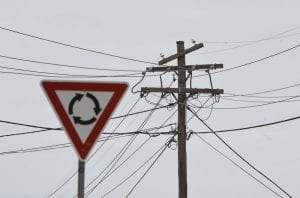The potential for many thousands of battery systems to act as a grid stabiliser has been highlighted at a renewable energy storage conference underway this week in Berlin. The distributed storage solution has been touted as being cost effective, as it mobilizes low-interest investment from private households.
A series of presenters at the 8th International Renewable Energy Storage Conference (IRES), winding up today in the German capital, have set out how distributed storage can help “unload the grid” of PV generated electricity. The solution is not only cost effective, as it can attract investment from households, but can also deliver high levels of self consumption and be optimised for battery life.
In an Australian context, the role distributed battery storage can play in micro-grids has been acknowledged by utility Horizon Power. Last month the utility announced that it will introduce a requirement that households and businesses wanting to install rooftop PV would also have to deploy “renewable energy smoothing” technology – essentially a battery system.
Horizon Power operates many micro grids in regional Western Australia, and the intermittent nature of a high penetration of solar PV could potentially destabilize these grids. Passing clouds could result in a “black hole” on the grid, as PV production slumps.
Performance and price
An increasing number of solar storage products are being introduced onto the market, and some Western Australian installers are reporting large numbers of enquiries. However at the IRES conference this week, it was acknowledged by presenters that the cost of batteries – in the case of lithium ion – and performance – in the case of lead acid – still leaves much to be desired.
Others, however, counter that a fast price digression with storage technologies is taking place. Former head of the WA’s Sustainable Energy Association, and now government lobbyist, Ray Wills argues that the current payback for battery systems installed in most Australian households is around 9 – 10 years. He expects that to drop to five years by 2015.
“We saw that with solar panels over the last five years, where we’re seeing 600% increase in production and the consequence was that ultimately solar panels came down in price more than 80% over the course of several years,” said Wills. “And we’ll see that sort of development with batteries as well.”
Driving the price drop is a similar build up of manufacturing capacity that occurred with solar panels. With batteries the demand for production is coming from the e-mobility and electronics market – in particular with laptops and smartphones.
Grid “unloading”
Aachen University’s Dirk-Uwe Sauer echoed these sentiments at the IRES conference, arguing forcefully across a number of sessions that while battery storage is expensive at present, that incentive programs should be in place to deliver cost-reducing economies of scale.
Sauer also said that the role of distributed battery storage as a grid stabilizer is also underappreciated. Batteries can absorb PV produced electricity at peak production times, and discharge during periods of high consumption. “This saves money for all of us by reducing the need for grid expansion,” said Sauer. Battery and inverter systems can be set to reduce the amount of PV being fed into the grid by around 40% of peak production, although other presenters made the case that that level can actually be increased to as high as 75%, without adversely affecting the performance of the battery both financially and technically.
Sauer said that this solution would be relatively straightforward, requiring software to be added to systems, rather than additional hardware, such as grid-level storage or grid expansions.
Lower capital cost
The cost of capital for installing many thousands of small battery systems would be much lesser than that required to build large grid storage, argued Sauer. He also said that, in a German perspective, grid instability caused by intermittent solar production occurs on the country’s low voltage network. Therefore, Sauer argued, it is better to solve the problem where it occurs, on the low voltage network itself.
Private households would be happy to install a battery in their home, with their PV system, and expected only a ROI of around 3%. In contrast, argued Sauer, institutional investors – required to larger storage projects or grid expansions – would expect returns of around 7% to 10%. “If we can activate the investment from the people, at these low interest rates, we can all save,” said Sauer.
Since May of 2013 Germany has a subsidy for residential battery storage systems. Known by the acronym KfW, the program was heavily criticized by some presenters at the IRES. Under the KfW, which essentially provides cheaper finance for households installing solar batteries, households are required to limit grid feed in to 40% of peak performance of the system.
Jonathan Gifford is an Australian clean technology journalist, based in Germany. You can follow him at @jonogifford








